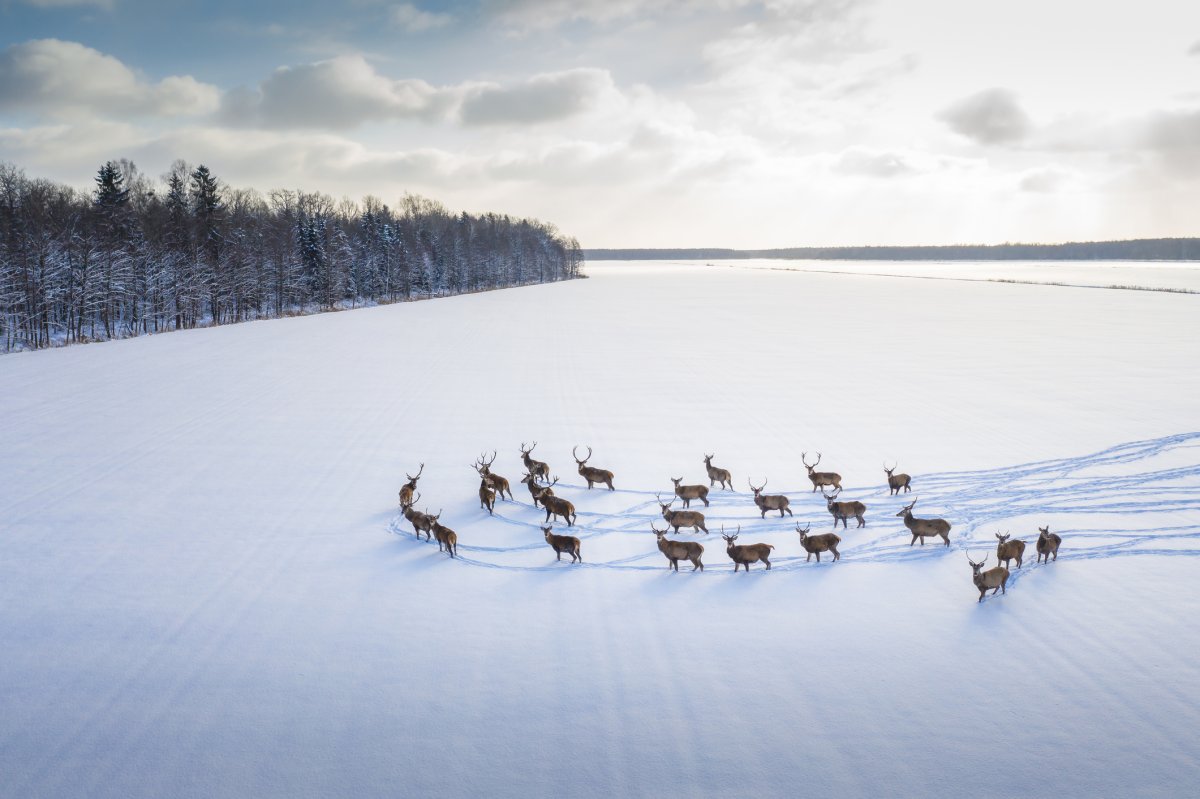As global temperatures continue to rise, the Arctic landscape is collapsing. Glaciers and ice sheets are melting at an unprecedented rate, and soil that has been frozen for millennia is starting to thaw.
The effects of sea level rise and habitat loss are already being felt around the world, but another threat is beginning to stir beneath the surface.

Permafrost is land that has remained completely frozen for two or more consecutive years. The world's oldest permafrost, found in Siberia, has been frozen for over 650,000 years.
Around 1,700 billion tons of carbon are thought to be sequestered in this frozen soil, which is released into the atmosphere as the permafrost thaws. But these greenhouse gasses are not the only issue—microbes that have been locked in the soil for millennia are also beginning to emerge.
A single gram of permafrost can contain hundreds of thousands of species of dormant microbes, many of which are thought to be able to survive through extreme conditions (In 2016, an outbreak of anthrax in northern Siberia killed a 12-year-old boy and thousands of animals). Unusually warm weather had accelerated the thawing of permafrost in the region, and the outbreak is thought to have been caused by anthrax spores released from a recently exposed reindeer carcass.
Pathogens thought to be extinct, such as smallpox, may also still be lurking beneath the frozen soil, as might ancient viruses to which we have no natural immunity and no effective vaccines or treatments.
In 2014, a group of French and Russian researchers re-activated a giant virus, containing hundreds of genes, that had been found under the Siberian permafrost. The virus, known as a pandoravirus, had laid dormant for 30,000 years under the ice. While this particular virus only infects amoeba, its very existence proves that microbes locked in the permafrost can still be activated thousands of years after they were first frozen.
"If amoeba viruses can survive in these conditions, there is no reason for other viruses not to survive as well," Jean-Michel Claverie, who led the research, told Newsweek.
While today fewer than 5 million people live in close proximity to the Arctic permafrost, global warming is set to open up new shipping routes and resource pools, which will in turn increase trade and tourism in the region. As a result, people will be more likely to come into contact with these ancient pathogens.
"The public health risk is coming from the accelerated release of previously frozen viruses combined with increased human exposure, since global warming is also making Arctic areas much more accessible to industrial development," Claverie said.

Warming temperatures will also cause more animals to migrate northwards, which will bring viruses into contact with many potential new hosts. This increases the risk of viruses spilling over from one species to another. Similar spillover events have been behind the emergence of recent pandemics such as SARS-CoV-2 and HIV.
In a recent study, published in the journal Proceedings of the Royal Society B, researchers at the University of Ottawa in Canada used genetic analysis to assess how the risk of viral spillover could increase as a result of rising global temperatures.
The research was conducted using samples of soil and lake sediment taken from Canada's Lake Hazen, the largest freshwater lake found north of the Arctic circle.
"We used glacier runoff as a proxy for climate change, as it has been shown that a warming climate is going to increase glacier runoff at that specific lake," Stéphane Aris-Brosou, one of the study's co-authors, told Newsweek. "In our paper, we found that spillover risk increased with glacier runoff – or climate change – in lake sediment samples."
Melting glaciers deliver large amounts of meltwater and sediment to the lake every year, which increases turbulence and sediment deposition. This appears to have caused significant disruption to the lake's ecosystems and may increase the risk of viral spillover.
"Due to the increase in meltwater following warming temperatures, lake turbidity has increased over the past 10-15 years, which perturbs the bottom of the lake," Aris-Brosou said. "This fragmentation of the aquatic habitat creates conditions that are favorable to spillover.
"Fragmentation creates barriers to gene flow, which increases differentiation among niches, hence accelerating the coevolution of viruses and of their hosts. This acceleration potentially leads to viral diversification."
Aris-Brosou was keen to stress that the results of the study were not produced to predict the next pandemic. Rather, the study indicated that, as our planet continues to warm, the Arctic could become a fertile ground for the emergence of future pandemics.
"It is one more line of evidence that we are modifying our planet in negative ways, and we need to reconsider the way we live," Aris-Brosou said.
References:
Legendre M, et al., Thirty-thousand-year-old distant relative of giant icosahedral DNA viruses with a pandoravirus morphology, PNAS, January 30, 2014, https://doi.org/10.1073/pnas.1320670111
Lemieux A, et al., Viral spillover risk increases with climate change in High Arctic lake sediments, Proc. R. Soc. B., October 26, 2022, http://doi.org/10.1098/rspb.2022.1073
Liskova EA, Egorova IY, Selyaninov YO, et al., Reindeer Anthrax in the Russian Arctic, 2016: Climatic Determinants of the Outbreak and Vaccination Effectiveness. Front. Vet. Sci., June 24 2021, doi: 10.3389/fvets.2021.668420
Uncommon Knowledge
Newsweek is committed to challenging conventional wisdom and finding connections in the search for common ground.
Newsweek is committed to challenging conventional wisdom and finding connections in the search for common ground.
About the writer
Pandora Dewan is a Senior Science Reporter at Newsweek based in London, UK. Her focus is reporting on science, health ... Read more
To read how Newsweek uses AI as a newsroom tool, Click here.








